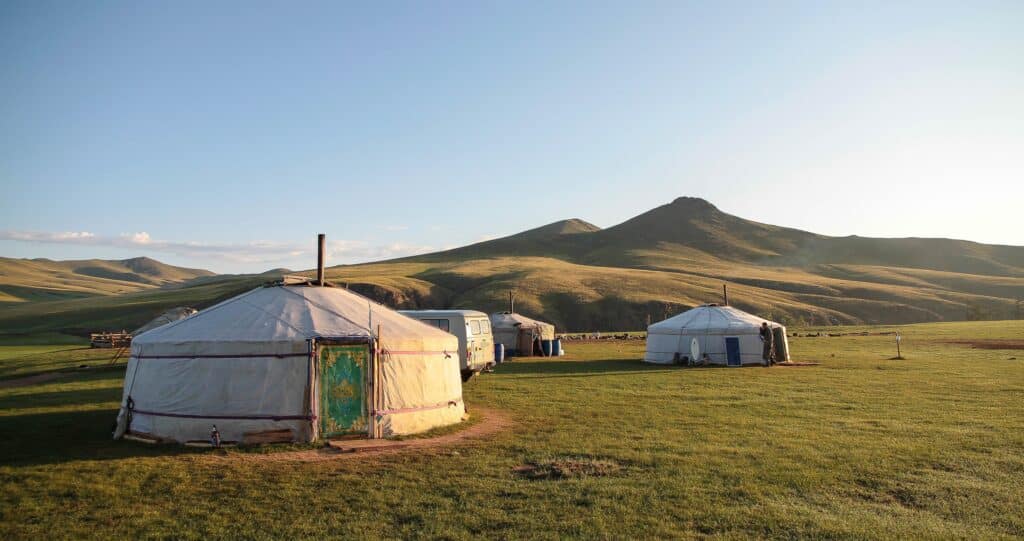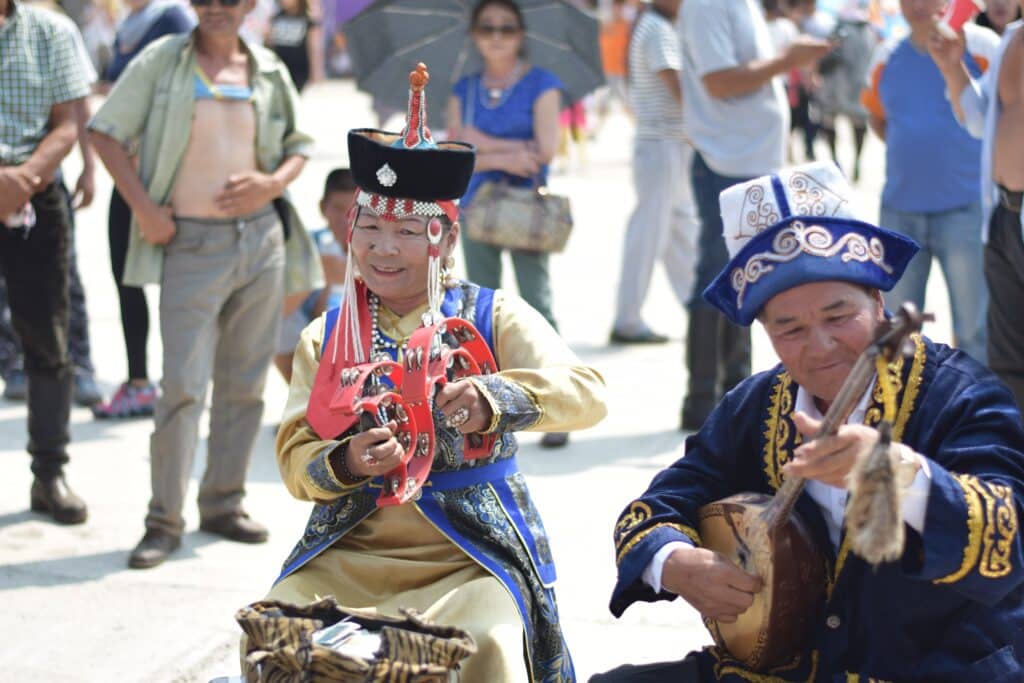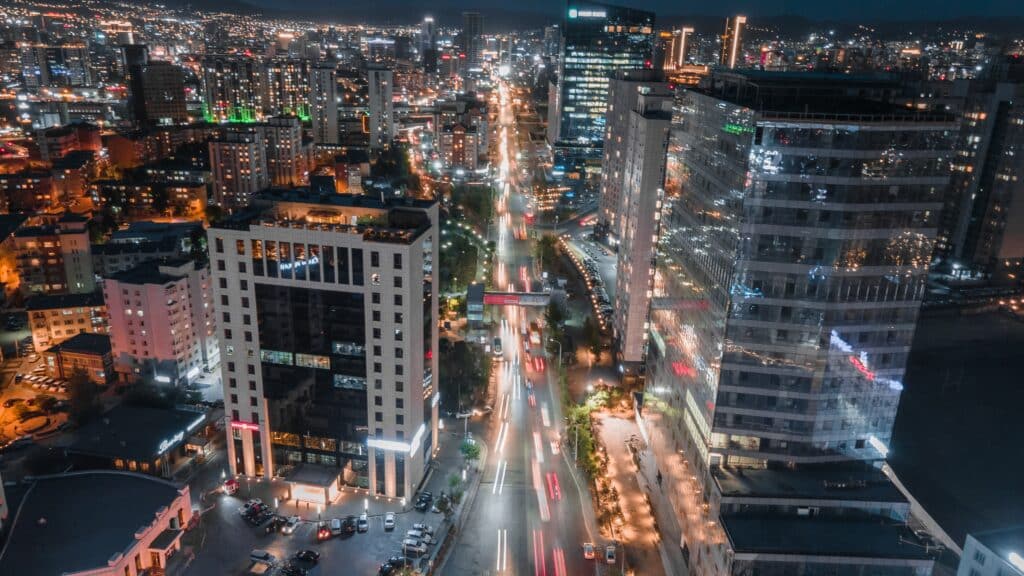Last updated on October 10th, 2023 at 10:37 pm
In Mongolia, people pay for goods and services with the Mongolian tugrik (MNT). Also called the Tögrög, it’s the official currency of Mongolia, and ₮ is its symbol.
The Bank of Mongolia issues paper currency in denominations of 1, 5, 10, 20, 50, 100, 500, 1,000, 5,000, 10,000, and 20,000 tugriks. Coins are minted in denominations of 200, 100, 50, and 20 tugriks. However, Mongolians rarely use bills smaller than 100 tugriks or coins of any denomination due to their low value.

Five Fast Facts About the Mongolian Tugrik (MNT)
While Mongolia is the only country that uses the tugrik as currency, its coins are popular collectibles worldwide. Read on for more interesting MNT facts.
1. Origin of “Tugrik”/”Tögrög”
“Tögrög” is a Mongolian word initially used to describe a circle or wheel. However, the word’s use today is generally limited to the Mongolian currency. One exception is that, when the moon is full, you may hear Mongolians refer to the “tögrög sar.”
2. Rapid Value Growth in 2010
The MNT broke records in 2010 when its currency exchange rate against the United States Dollar (USD) rose 15% due to a mining boom. At its highest value that year, 1 MNT was worth 0.0008 USD.
3. Beautiful Imagery
Mongolian tugrik bills feature vivid imagery from the nation’s history. For example, famed Emperor Genghis Khan graces the 5,000- and 10,000-tugrik bills. You’ll also find depictions of Khan’s tent and of horses, horsehair tails, the Karakorum silver tree fountain, Mongolia’s national “Soyombo” symbol, and communist icon Suhkbaatar on MNT banknotes.

4. Tugrik Coin Sizes and Metals
Each type of coin has a specific diameter, ranging from 17.5 millimeters to 25 millimeters. Both the 100- and the 500-tugrik coins measure 22 mm in diameter, which is a little larger than a U.S. nickel. Meanwhile, the 20-tugrik coin is about the size of a U.S. dime.
The Bank of Mongolia mints MNT coins from cupronickel and aluminum. The smaller 20- and 50-tugrik coins use aluminum, while the 200- and 500-tugrik coins are made from cupronickel.
5. Collector’s Items
Many coin collectors include tugrik coins among their collectibles. As a result, a robust market exists for MNT coins. In addition, tourists often save some Mongolian currency as a keepsake from their travels to Mongolia.
One popular collectible is a 2007 Mongolian 500-Tugrik commemorative coin that features a picture of United States President John F. Kennedy and a little button that plays a clip of JFK’s celebrated “Berliner” speech.
Interesting Facts About Mongolia
Mongolia is the second-largest landlocked nation globally. Positioned between Russia and China, it is sparsely populated: Its 3.3 million residents are spread across a vast region that ranks as the world’s 18th largest in area. Most of the country is pasturelands. The rest consists of forests and deserts.
Mongolia’s people have a long history of raising and herding livestock. But mineral mining also makes up a significant portion of the nation’s economy. The nation’s GDP mainly depends on its exports, including animal products, minerals, cashmere, and crude oil.

History of Mongolian Currency
Historical evidence shows that Genghis Khan used gold and silver currency for trade. Moreover, he introduced paper money in 1227. The Mongol Empire established the Monetary Division in 1253, fulfilling some duties similar to those of banks today.
The Trade and Industry Bank of Mongolia, which opened in 1924, was a joint venture between Mongolia and the Soviet Union that preceded the nation’s current central bank. There was no main currency when the government established TIBM. But in 1925, monetary reform helped create the Mongolian Tugrik. The Monetary Reform Act of 1925 mandated that the currency be backed by precious metals and high-liquidity goods.
Surprising Facts About Mongolia
- The United States didn’t recognize Mongolia as a nation until January 1987.
- Genghis Khan couldn’t read or write. Despite that, he introduced a universal writing system to Mongolia.
- Wild Mongolian horses have one or two more chromosomes than domesticated horses and their “wild” descendants.
- Mongolian horses outnumber humans 13 to 1, and there are 4.5 times more sheep than people in Mongolia.
- Some historians believe Mongolian horsemen may have invented ice cream.
Mongolian Tugrik Exchange Rates
Foreign currency exchange rates can be confusing, but Remitly’s exchange rate guide simplifies the topic. If you want to send money to Mongolia from the United States, check out the Mongolian currency exchange rate on our app or website.
We also provide current exchange rates for people sending money home to Mongolia from the UK, Canada, Australia, and elsewhere, so you can easily calculate the value of the Mongolian tugrik against the euro, pound, dollar, or other currency.
Sending Money to Mongolia
You can send money to Mongolia with Remitly. New customers may be eligible for a special offer on their first transfer.
